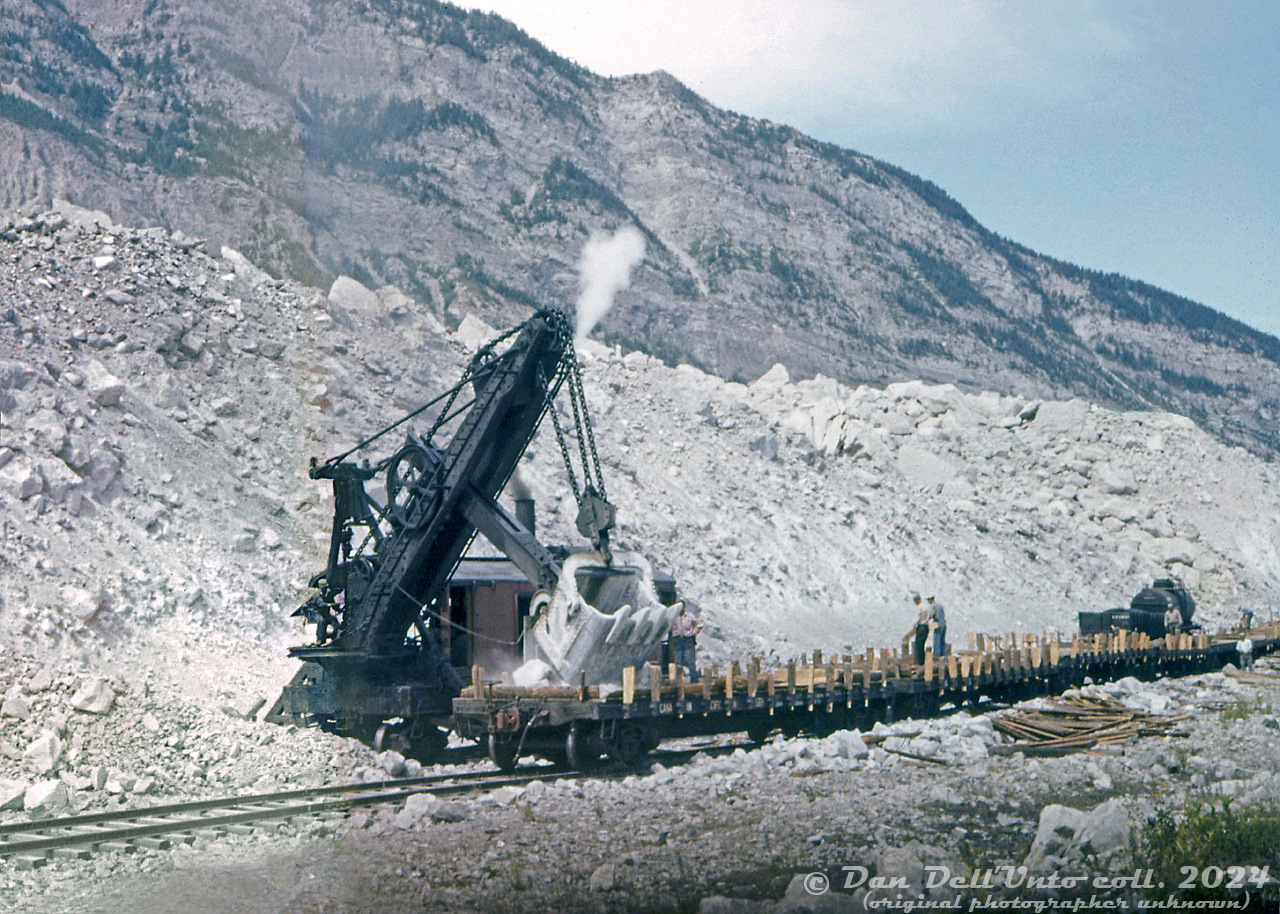|
Caption: A rare view of a Canadian Pacific rail-mounted steam shovel, CP 400308, loading some ballast flatcars with loads of rock at Frank Slide, Alberta. A worker rides the deck behind the shovel boom, likely operating the controls for its large chain-driven shovel bucket, as more workers set up the trailing flatcars with wooden stakes and blocking. The steam shovel is operating in the middle of the namesake rockslide, on some siding tracks off CP's Crowsnest Subdivision mainline. Information on CP's operation here is scarce, the shovel might have been stationed here for conveniently obtaining aggregate from the slide for railway purposes (fill, crushing, etc). Rock loading on flatcars with wooden stakes and side rails is also rather curious, although due to the size of the rocks, removing the stakes and pushing them off the sides may have been the easiest way to unload them (they would have clogged bottom-dump hopper cars, and would have been harder to unload from gondolas).
Frank Slide got its name on April 29th 1903 when a giant rockslide of limestone slid down Turtle Mountain and buried the east end of the mining town of Frank, the coal mine, the CPR line, and buried between 70-90 residents of the town. The railway line and mine were both opened, part of the town relocated further away, but much of the area remains unchanged since the rockslide happened.
With the exception of some early images, photos of CP steam shovels in their later years are scarce. An old freight car roster shows three steam shovels (CP 400308-400310, each with a 4 cubic yard bucket) still on the roster in 1965, although with the popularity of newer, more nimble diesel-powered cable and hydraulic excavators, those old steam-powered relics likely didn't last too much longer.
Original photographer unknown (possibly E.W.Johnson of Calgary), Dan Dell'Unto collection slide with extensive restoration (this was the first slide in a roll, and 1/3rd of it was horribly overexposed and colour-shifted).
|



Nice restoration, Dan. Definitely a unique image.
The size of the bucket compared to the worker beside it is impressive. The Simcoe County Museum north of Barrie has a steam shovel they fire up a couple of times a year. It is quite a sight to see one operating
Further information from a viewer is that this is a 75-ton steam shovel built by the Marion Steam Shovel Company in 1911 (serial 2342), originally numbered CP 300308 but renumbered 400308 in 1913.
Also…..if anyone gets out here, there are lots of good photo locations in the Crowsnest pass. The Frank Slide interpretive center is also worthy of a few hours of visiting.